The red color of the blooming parasol trees in Cu Lao Cham blends with the green of the mountains and sea, attracting tourists to check in and sightsee.
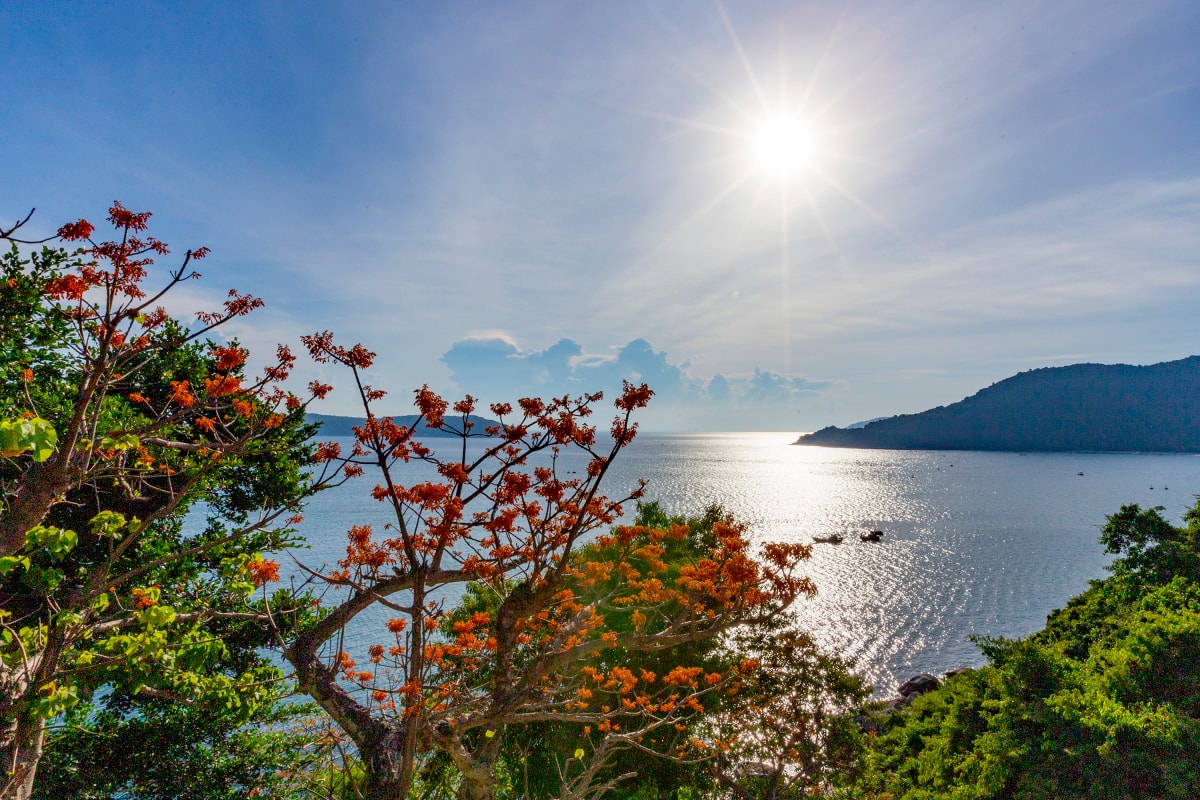
In late July, the royal poinciana flowers bloom bright red throughout the forests of Cu Lao Cham, an island located about 18 km from Hoi An. This place is recognized by UNESCO as a World Biosphere Reserve thanks to its rich ecosystem, preserving more than 950 aquatic species.
Cu Lao Cham is one of the favorite tourist destinations in Quang Nam because of its wild beauty.

The coastal road at Hon Lao, the largest island of Cu Lao Cham, is painted red by the parasol trees. Parasol trees here are denser than in other places. Hon Lao is also home to a large population.
Since late July, Le Huy Tuan, a resident of Da Nang, has been wandering the streets of Lang Beach, Xep Beach, Bim Beach and Huong Beach to take photos of the blooming parasol trees. The freelance photographer shared that he "wants more people to know about the flower season of this island commune."
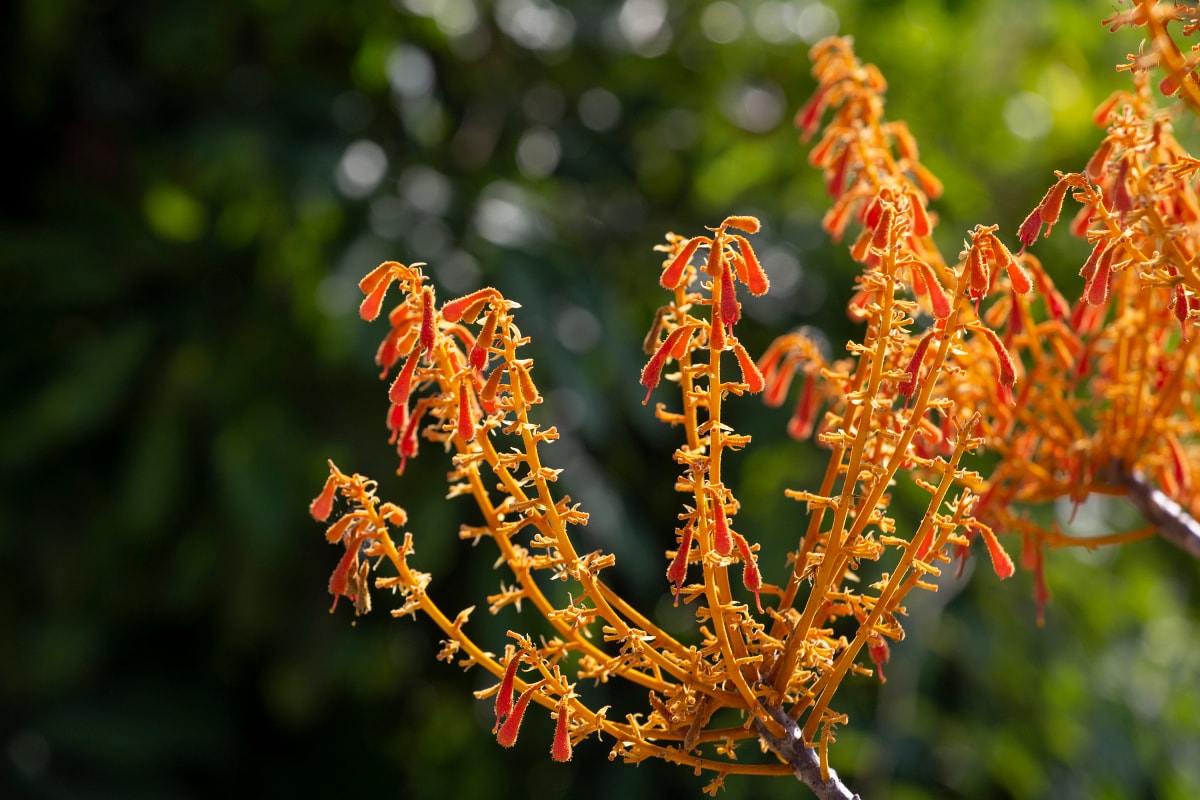
The parasol tree grows from the rocky mountains, the more arid and sunny the drought, the more brilliant the flowers bloom. The website of the Cu Lao Cham Marine Reserve Management Board explains that because the soil on the island is dry and the soil layer is thin, the mature tree is about 5-10 m tall. The parasol tree on Cu Lao Cham belongs to the family of Sterculia, called red parasol tree to distinguish it from the parasol tree in Hue which has purple-pink flowers.
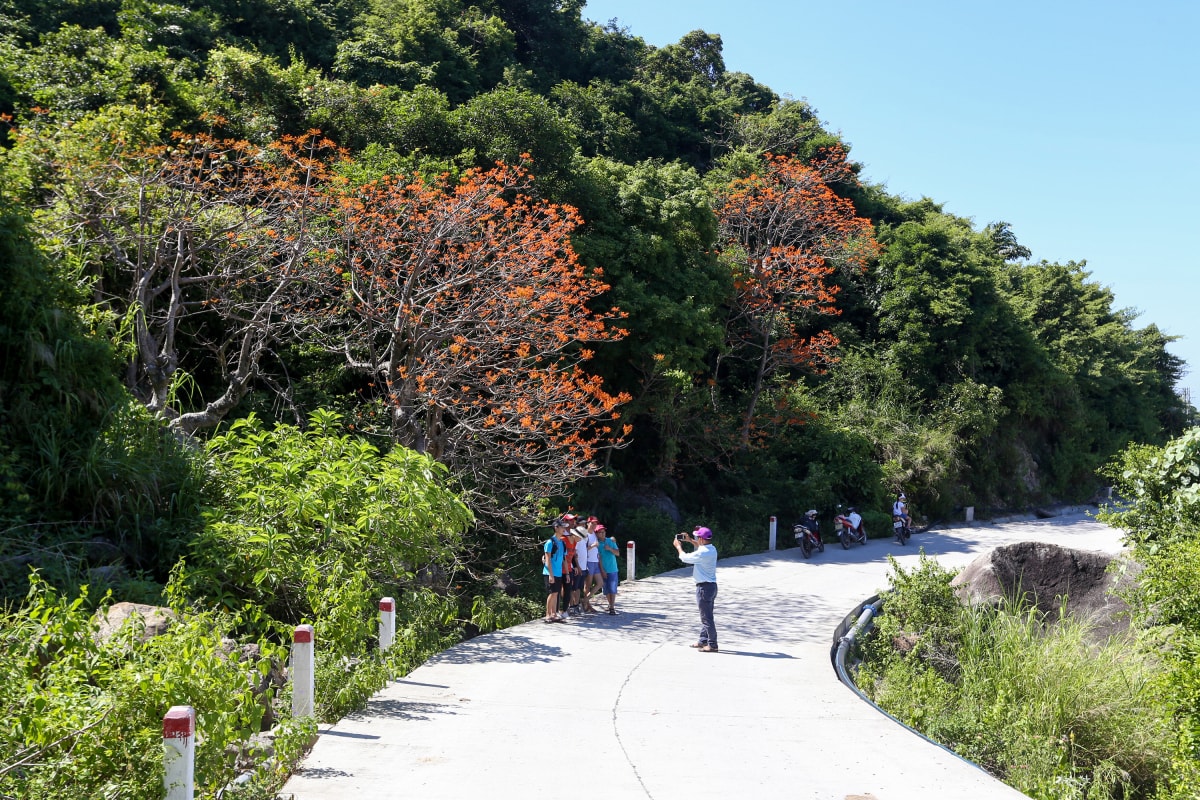
The blooming parasol trees intermingle with forest trees on the mountain slopes, along the coastal road, convenient for tourists to sightsee and take pictures.
Mr. Tuan said that the parasol flowers appear at the end of July and bloom for a month. When blooming, the tree loses its leaves and only the red color of the flowers remains. In autumn, the tree begins to produce new leaves and fruit. After that, the seeds ripen evenly and spread everywhere, combined with high humidity, they will germinate into seedlings.
When the flowers bloom, many visitors come to Cu Lao Cham to watch and take pictures.

Visiting Cu Lao Cham during the blooming season, Ms. Xuan Sang was delighted by the bright red flowers standing out against the green of the forest. "The flowers add color to the poetic landscape. Next year, I will invite my friends to come here to experience it again," said a tourist from Da Nang.

The pristine Bai Xep is chosen by many tourists for swimming when visiting Cu Lao Cham. This place also has ancient sycamore trees reaching close to the sea.
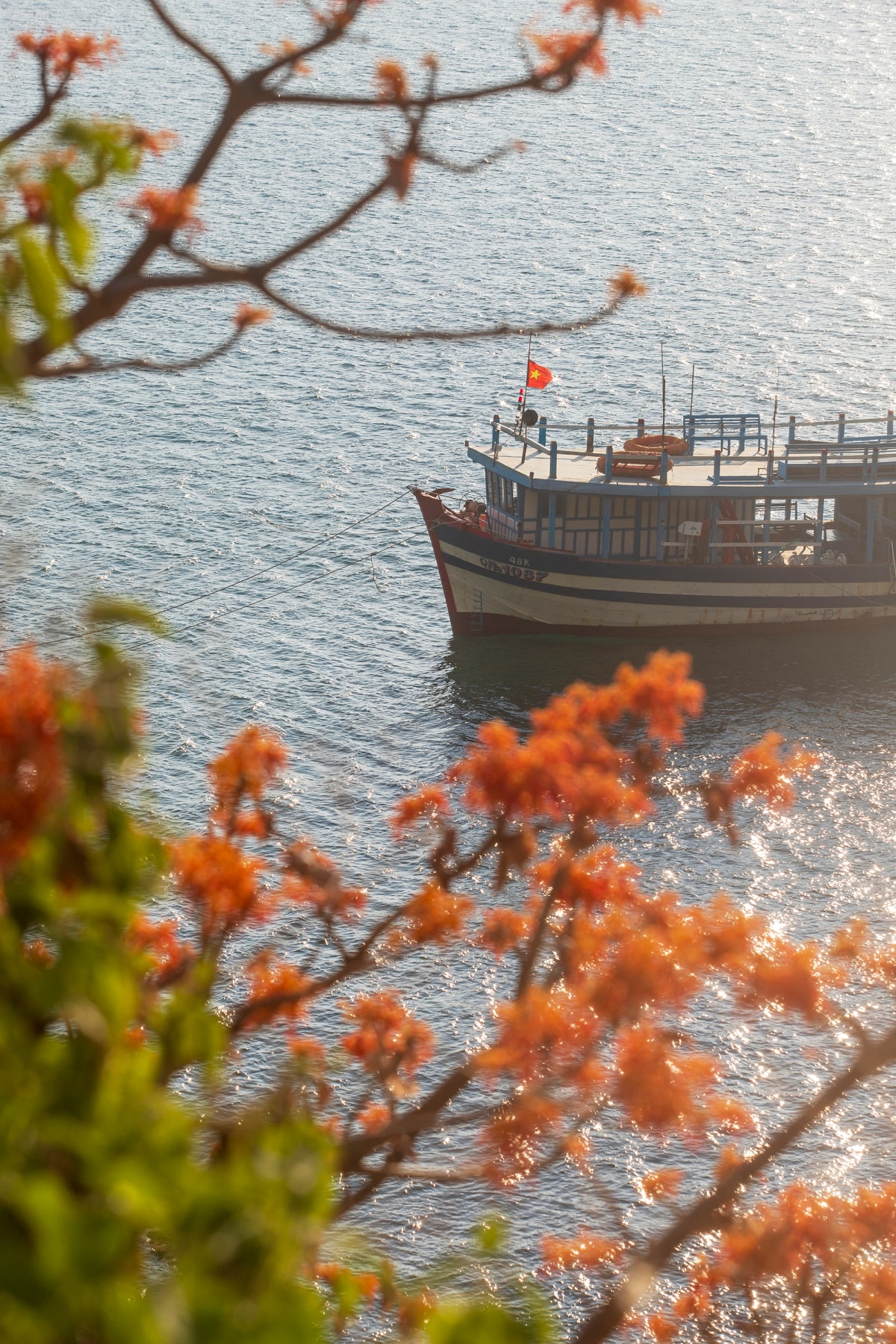
Having taken many photos of the parasol trees on the island, this time Mr. Tuan was happy because many more trees were planted in public places and houses. When he picked up the camera to take a photo, seeing the color of the flowers against the blue sky, and in the distance the boats sailing out to sea, "I was strangely moved," Mr. Tuan said.
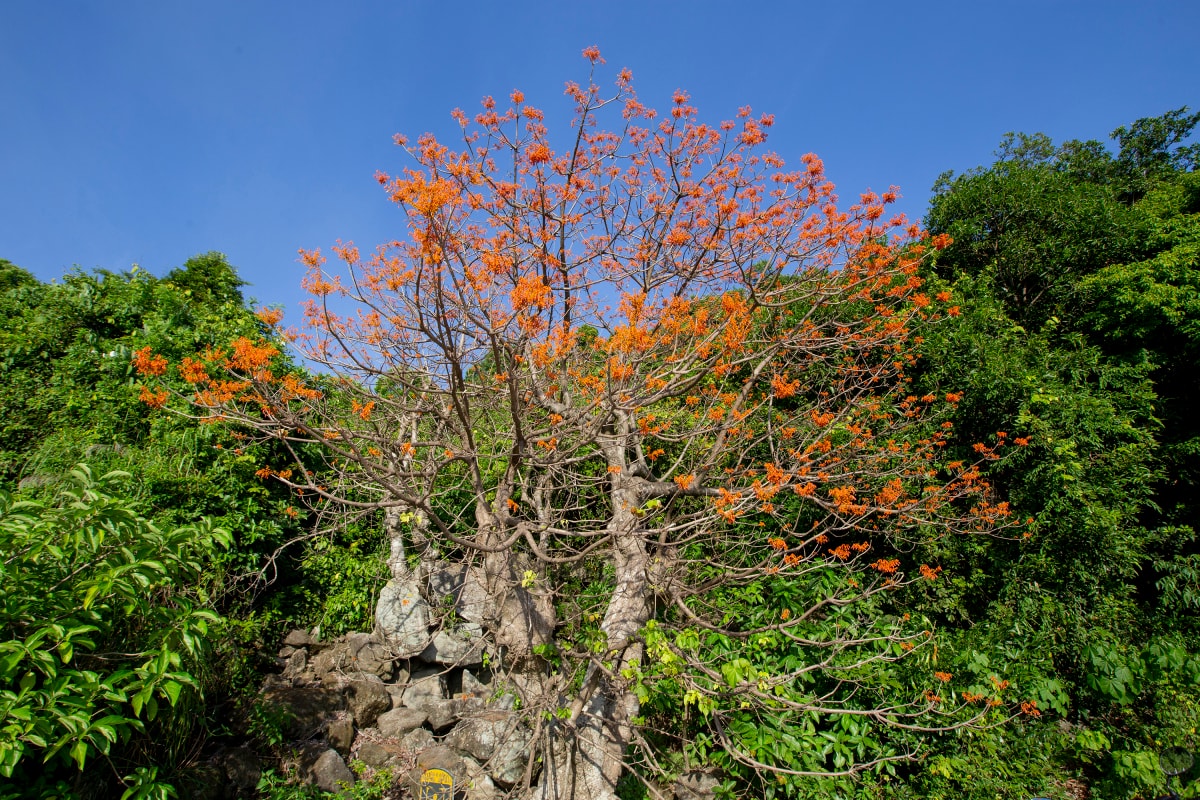
The parasol tree has long been associated with the islanders. Three ancient red parasol trees at Tinh stream slope, Bai Lang village (photo), aged from 155 to 250 years, were recognized as Vietnam Heritage Trees by the Vietnam Association for Conservation of Nature and Environment in April 2015. In addition, parasol trees are very useful in daily life, the seeds and bark of the tree are used to make hammocks - a popular handicraft - and parasol oil, sunscreen, and food.
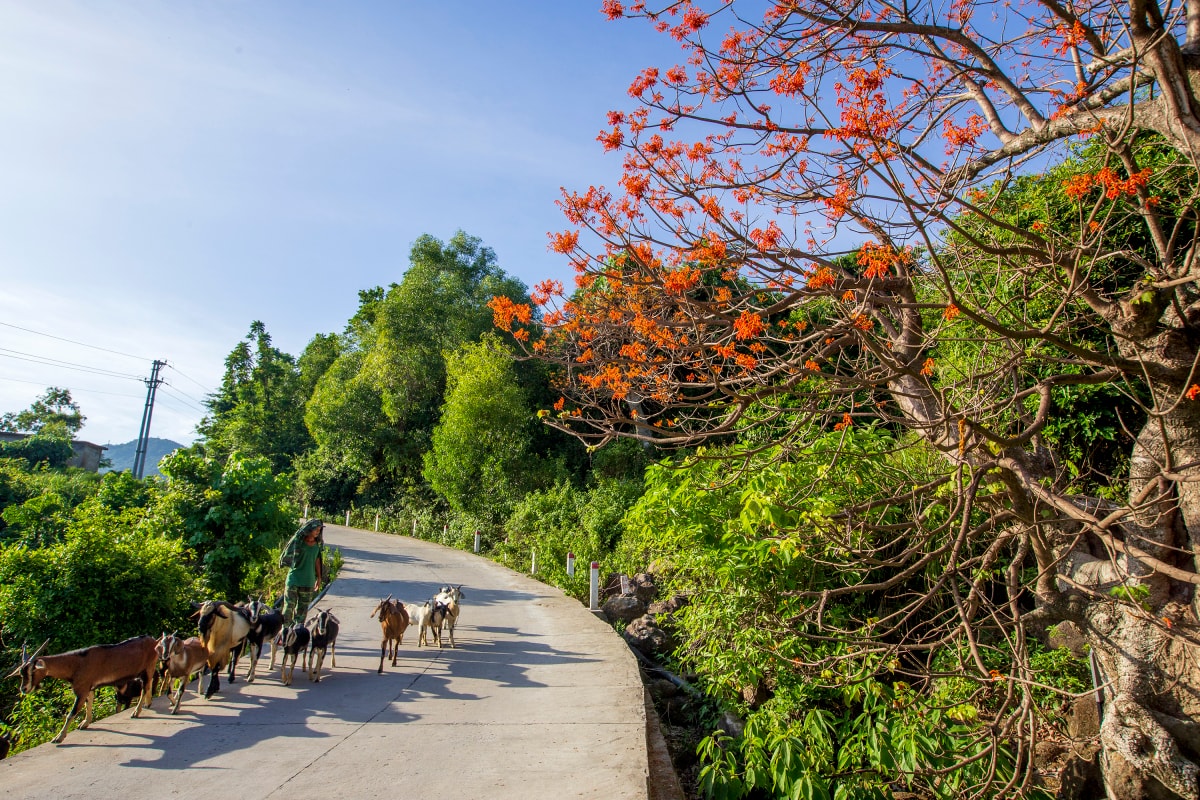
Coming to Cu Lao Cham in late July and early August, in addition to checking in on the blooming parasol trees, visitors can participate in activities such as diving to see corals, camping, challenging paragliding, enjoying fresh seafood, and rustic dishes prepared by local people.
The best time to visit Cu Lao Cham is from March to August because the sky is clear, the sea is calm, and there is little rain. The remaining months often have storms, rough seas, and big waves, so most tourist boats do not operate.